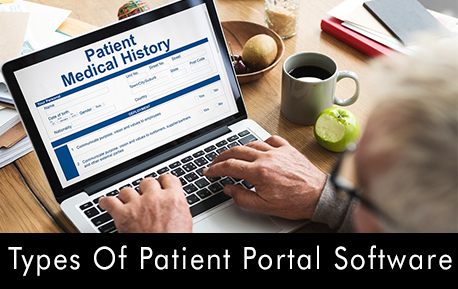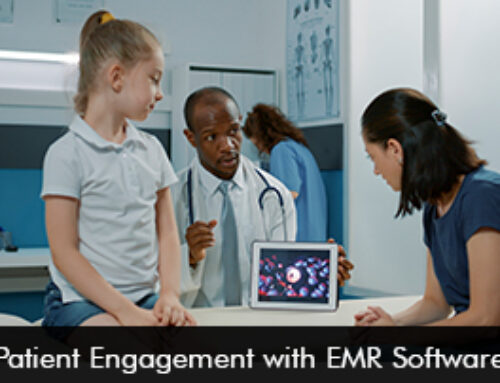For the Healthcare Industry patient portal has become a necessity. Patient portals have improved patient engagement which has further improved health outcomes and reduced healthcare costs by facilitating the process of communicating and sharing information between patients and providers.
Patient Portal Software provides a secure way for patients to interact with their healthcare provider. Patient Portal has allowed patients to view their medical records, communicate with their provider, schedule appointments, access health education material, check e-Prescription (e-Rx) refills, update their medical history and fill out intake forms, among other features via the internet.
Features of Patient Portal Software
Before selecting the right Patient Portal EMR software, you should make sure that it has the following key features and functionalities available to cater to your requirements.
Patient Engagement – Patient Portal Software is liable to improve patient satisfaction, self-care, and increase commitment to getting treatments.
Streamlined Communication – Patient portals Software should reduce the amount of time spent on transferring information to patients and prevent miscommunications.
Security Regulations – Software should offer robust security protocols of data transferred to a patient portal.
Use across Care Settings – Patients should be offered secured access to harmonize data they received while treatment between multiple practices for different things rather than having a need to create multiple login credentials to access the patient portal of each provider.
Types of Patient Portal software
Other than the conventional integrated Patient Portal, as ONC Certification for Stage 2 of the Meaningful Use Incentive Program is becoming difficult to achieve, many EMR Software providers are following the “modular approach” to provide patient portal functionality for their tools. Following are the types of Patient Portal Software:
Integrated Patient Portal Software
When selecting an Electronic Health Records (EHR) or Practice Management (PM) software based on its patient portal it is important to make a selection that is right for your practice user-friendly, secure and offers features that will facilitate patient engagement. EMR systems that aren’t following the modular approach offer a robust integrated patient portal. There are many pros and cons of selecting an EHR Software with pre-integrated patient portal some of which are as below:
Advantages:
Advantages of selecting an EHR with integrated patient portal include:
- Improved efficiency in care coordination
- Lower Cost (no custom development)
Drawbacks:
Some of the all-in-one systems lack features including:
- Non-incentivized (in some cases fulfill only the bare minimum requirements)
- Online Medical bill payment
- Online Patient Registration
- Appointment scheduling and rescheduling
Top Integrated Patient Portal Software by EMRSystems
| Integrated Patient Portal Software |  |
 |
 |
| User Rating on EMRSystems |
|
|
|
| User Satisfaction |
87.2% |
88.3% |
74.3% |
| Pricing | |||
| Free Demo | |||
| HIPAA Compliance |
✓ |
✓ |
✓ |
| Patient Education |
✓ |
✓ |
✓ |
| Mobile Application |
✓ |
✓ |
✓ |
| Achieve Meaningful Usage 2 |
✓ |
✓ |
✓ |
Standalone Patient Portals
The standalone patient portals are the result of many frustrations with pre-integrated Patient Portal Software but there are many pros and cons of selecting a Standalone Patient portal some of which are as below:
Advantages:
Standalone Patient Portal Systems features:
- Incentives
- No sunk costs
- Better user experience
Drawbacks:
Some of the disadvantages of Standalone Patient Portal Systems include:
- Less efficient in care coordination
- Limits user choice
- Costly
Top Standalone Patient Portal Software by EMRSystems
| Standalone Patient Portal Software |  |
| User Rating on EMRSystems |
|
| User Satisfaction |
83.2% |
| Pricing | |
| Free Demo | |
| HIPAA Compliance |
✓ |
| Mobile Application |
✓ |
| Patient Education |
|
| Achieve Meaningful Usage 2 |
✓ |









